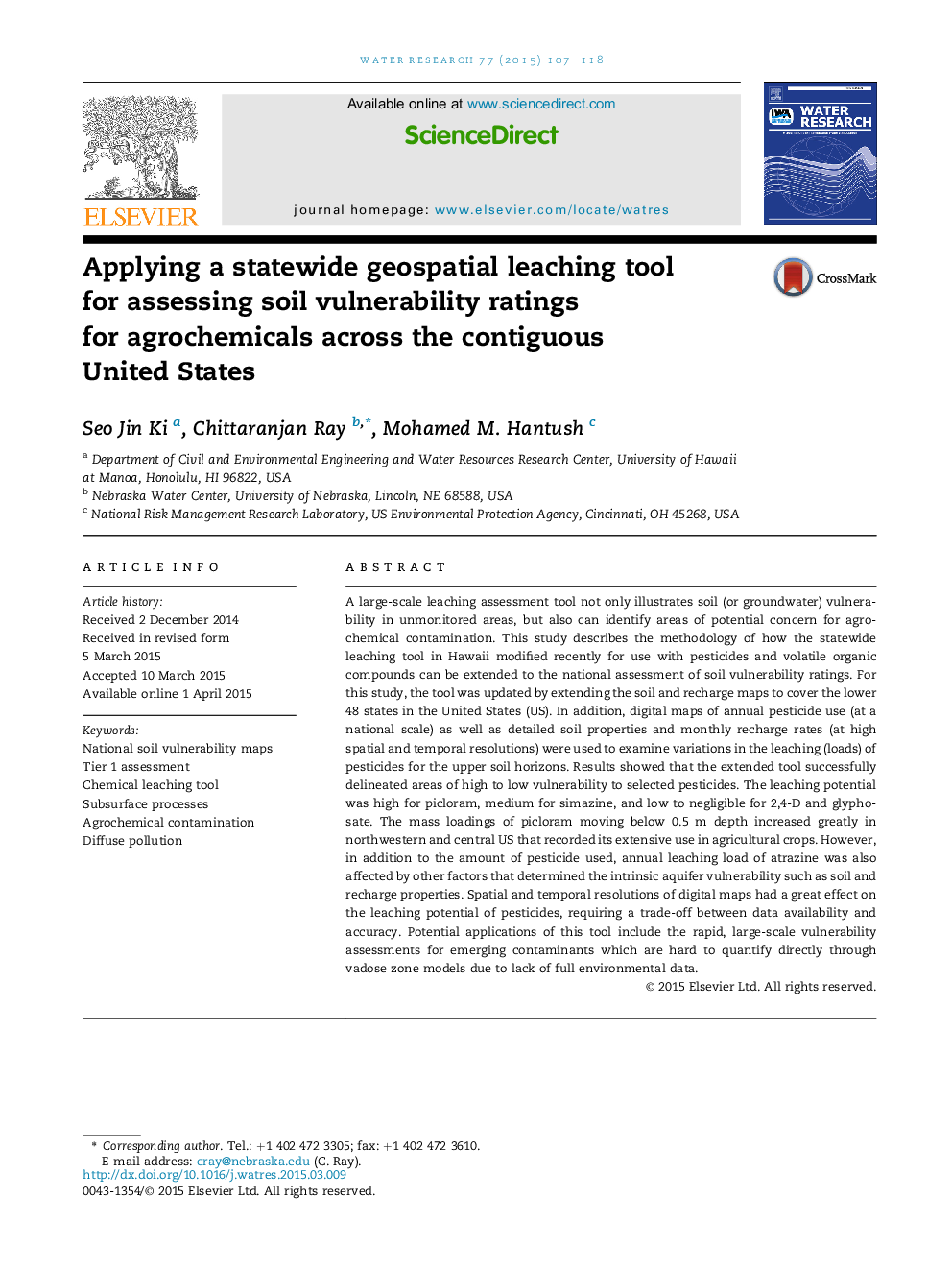| کد مقاله | کد نشریه | سال انتشار | مقاله انگلیسی | نسخه تمام متن |
|---|---|---|---|---|
| 4481135 | 1623091 | 2015 | 12 صفحه PDF | دانلود رایگان |
• A large-scale leaching assessment tool was developed using a physically based method.
• National digital data sets were compiled for screening agrochemical contamination.
• The leaching of chemicals was high in areas associated with their extensive use.
• The contaminant load in soils was affected by the intrinsic subsurface properties.
• The tool can be applied to new contaminants that do not have full environmental data.
A large-scale leaching assessment tool not only illustrates soil (or groundwater) vulnerability in unmonitored areas, but also can identify areas of potential concern for agrochemical contamination. This study describes the methodology of how the statewide leaching tool in Hawaii modified recently for use with pesticides and volatile organic compounds can be extended to the national assessment of soil vulnerability ratings. For this study, the tool was updated by extending the soil and recharge maps to cover the lower 48 states in the United States (US). In addition, digital maps of annual pesticide use (at a national scale) as well as detailed soil properties and monthly recharge rates (at high spatial and temporal resolutions) were used to examine variations in the leaching (loads) of pesticides for the upper soil horizons. Results showed that the extended tool successfully delineated areas of high to low vulnerability to selected pesticides. The leaching potential was high for picloram, medium for simazine, and low to negligible for 2,4-D and glyphosate. The mass loadings of picloram moving below 0.5 m depth increased greatly in northwestern and central US that recorded its extensive use in agricultural crops. However, in addition to the amount of pesticide used, annual leaching load of atrazine was also affected by other factors that determined the intrinsic aquifer vulnerability such as soil and recharge properties. Spatial and temporal resolutions of digital maps had a great effect on the leaching potential of pesticides, requiring a trade-off between data availability and accuracy. Potential applications of this tool include the rapid, large-scale vulnerability assessments for emerging contaminants which are hard to quantify directly through vadose zone models due to lack of full environmental data.
Figure optionsDownload high-quality image (373 K)Download as PowerPoint slide
Journal: Water Research - Volume 77, 15 June 2015, Pages 107–118
